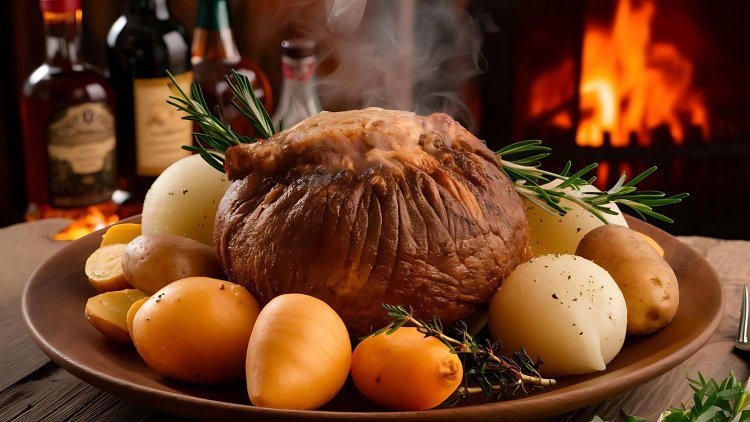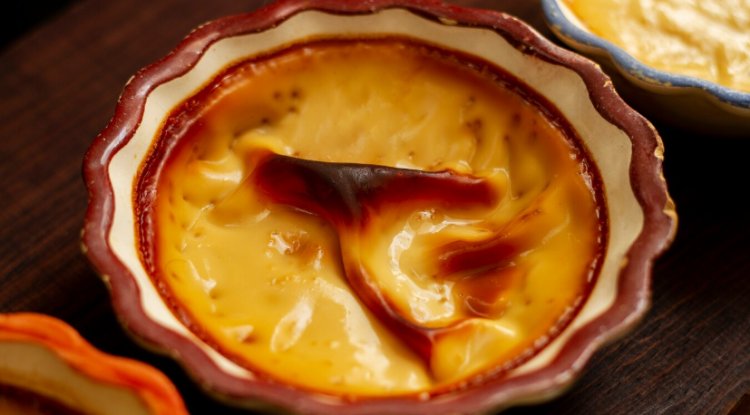Haggis: A Taste of Scotland’s Bold Tradition
If you’re in the mood for something that’s steeped in history and rich with flavor, then haggis is the dish for you. This traditional Scottish delight might seem unconventional to some, but it’s a culinary experience that embodies the spirit of Scotland. Haggis is more than just a dish; it’s a symbol of Scottish heritage and a testament to the resourceful and hearty nature of Scottish cooking.

What Is Haggis?
Haggis is a savory pudding made from sheep offal, such as the heart, liver, and lungs, combined with oats, spices, and seasoning. The mixture is encased in the sheep's stomach and traditionally boiled. This dish has been enjoyed in Scotland for centuries and is particularly celebrated on Burns Night, a Scottish holiday honoring the poet Robert Burns. Despite its unique ingredients, haggis is surprisingly delicious, with a flavor profile that is both rich and comforting.
Ingredients You’ll Need
To make a traditional haggis, you’ll need the following ingredients:
For the Haggis Mixture:
- 1 sheep’s heart
- 1 sheep’s liver
- 1 sheep’s lung (optional, as this ingredient is less common)
- 1 large onion, finely chopped
- 1 cup of suet (beef or mutton fat)
- 1 ½ cups of steel-cut oats
- 2 teaspoons of ground black pepper
- 1 teaspoon of ground coriander
- 1 teaspoon of ground nutmeg
- 1 teaspoon of ground allspice
- 1 tablespoon of salt
- 1 tablespoon of vegetable oil
- 2 cups of beef or lamb stock
- 1 sheep’s stomach (for casing, or alternatively, a large piece of cheesecloth can be used)
For the Garnish:
- Fresh parsley, chopped
- Mashed potatoes (optional, but a classic accompaniment)
- Turnips or neeps, mashed (optional, another traditional side)
Preparing the Haggis
1. Prepping the Offal
Start by thoroughly cleaning the sheep’s heart, liver, and lungs. Rinse them under cold water and trim any excess fat. For best results, soak them in a bowl of cold salted water for several hours or overnight to remove any residual blood.
2. Cooking the Offal
Place the cleaned offal in a large pot and cover with cold water. Bring to a boil and then reduce the heat to a simmer. Cook the offal for about 2 hours, or until tender. Once cooked, drain and let cool slightly. Finely chop the offal or grind it in a meat grinder, depending on your texture preference.
3. Preparing the Mixture
In a large skillet, heat the vegetable oil over medium heat. Add the chopped onions and cook until they are translucent and soft. Combine the cooked onions with the chopped offal in a large mixing bowl. Add the suet, steel-cut oats, black pepper, coriander, nutmeg, allspice, and salt. Mix thoroughly.
4. Stuffing the Stomach
If using a sheep’s stomach, rinse it thoroughly and soak it in cold water for about 30 minutes. Place the stomach in a large pot of boiling water and cook for 15 minutes to remove excess salt and any impurities. Once prepped, stuff the stomach with the haggis mixture, ensuring that it is packed firmly. Tie the stomach securely with string.
If you are using cheesecloth, cut a large piece and form it into a pouch, securing it with string. Stuff the pouch with the haggis mixture and tie the ends tightly.
5. Cooking the Haggis
Place the stuffed stomach or cheesecloth pouch into a large pot of simmering water. The water should cover the haggis completely. Simmer for about 2 hours, adding more water as needed to keep it covered.
Serving Your Haggis
Once cooked, remove the haggis from the pot and let it rest for a few minutes before slicing. Serve the haggis hot, traditionally with mashed potatoes and turnips (neeps). Garnish with freshly chopped parsley for a touch of color and freshness.
Haggis might be an acquired taste for some, but it offers a unique glimpse into Scotland’s culinary traditions. This hearty dish is perfect for a special occasion or a comforting meal on a chilly evening. Embrace the flavors and the history of Scotland with this time-honored recipe.
Disclaimer: The recipes shared on this blog are intended for informational and entertainment purposes only. We do our best to ensure accuracy, but ingredient and preparation variations can alter results. Please use caution and consult a medical professional if you have dietary restrictions or health concerns. The blog and its authors are not liable for any adverse effects or consequences resulting from the use of the recipes provided. Always prioritize your health and safety when cooking.
What's Your Reaction?





















